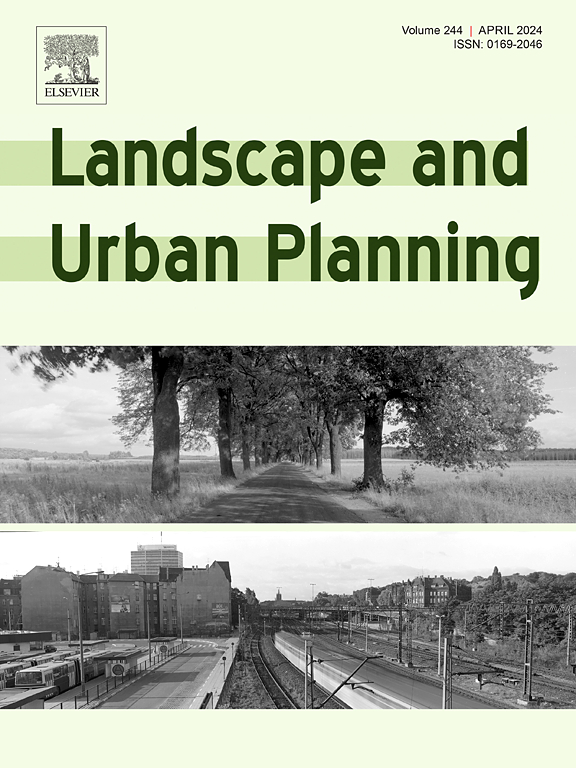推进公平的公园使用权:美国25个城市的政策扫描
IF 9.2
1区 环境科学与生态学
Q1 ECOLOGY
引用次数: 0
摘要
市政政策可以解决在公平使用优质公园方面的差异,但目前没有工具可以系统地确定此类政策,而且很少有研究显示政策在城市之间的普遍性和分布。本研究旨在1)验证政策扫描数据收集工具,2)按类别描述公园进入政策的流行程度,以及3)分析美国城市样本的人口和地理趋势。政策扫描工具在美国25个城市进行了试点,并在以下类别中收集了市政公园准入政策:公园需求评估、社区参与、公共资金、共享使用协议、维护、土地使用和开发、连通性和反流离失所。还定义了策略类别中的特定策略机制。关键信息提供者访谈证实,政策扫描工具检测到公园访问政策(准确率为83 - 100%)。大多数城市在连通性方面至少有一项政策(n = 24;96%),土地利用和发展(n = 21; 84%)和公共资金(n = 18; 72%)。土地使用和发展以及反流离失所最常出现在条例代码中,而公共资金和共享使用通常出现在独立政策中,例如决议、行政命令或多机构协议。西部和南部城市的政策数量明显多于东北地区。本研究揭示了美国各城市正在使用哪些类型的政策来增加公园和绿地的可及性,进一步强调了与公园和绿地可及性和公平性相关的政策实施和结果研究的必要性。本文章由计算机程序翻译,如有差异,请以英文原文为准。
Advancing equitable park access: a policy scan of 25 U.S. cities
Municipal policy can address disparities in equitable access to quality parks, but currently, no tools are available to systematically identify such policies, and little research shows the prevalence and distribution of policies across cities. This research aimed to 1) validate a policy scan data collection tool, 2) describe the prevalence of park access policies by categories, and 3) analyze demographic and geographic trends in a U.S. city sample. The policy scan tool was piloted in 25 U.S. cities and captured municipal park access policies in the following categories: Parks Needs Assessment, Community Engagement, Public Funding, Shared Use Agreements, Maintenance, Land Use and Development, Connectivity, and Anti-Displacement. Specific policy mechanisms within policy categories were also defined. Key informant interviews confirmed that the policy scan tool detected park access policies (83–100 % accuracy rate). Cities most often had at least one policy in Connectivity (n = 24; 96 %), Land Use and Development (n = 21;84 %), and Public Funding (n = 18;72 %). Land Use and Development and Anti-Displacement were most commonly found in codes of ordinances, while Public Funding and Shared Use were typically identified in standalone policies, such as resolutions, executive orders, or multi-agency agreements. Cities in the West and South regions had a significantly greater number of policies compared to those in the Northeast region. This study reveals what types of policies cities across the U.S. are using to increase access to parks and green space, further highlighting the need for policy implementation and outcome research related to parks and green space access and equity.
求助全文
通过发布文献求助,成功后即可免费获取论文全文。
去求助
来源期刊

Landscape and Urban Planning
环境科学-生态学
CiteScore
15.20
自引率
6.60%
发文量
232
审稿时长
6 months
期刊介绍:
Landscape and Urban Planning is an international journal that aims to enhance our understanding of landscapes and promote sustainable solutions for landscape change. The journal focuses on landscapes as complex social-ecological systems that encompass various spatial and temporal dimensions. These landscapes possess aesthetic, natural, and cultural qualities that are valued by individuals in different ways, leading to actions that alter the landscape. With increasing urbanization and the need for ecological and cultural sensitivity at various scales, a multidisciplinary approach is necessary to comprehend and align social and ecological values for landscape sustainability. The journal believes that combining landscape science with planning and design can yield positive outcomes for both people and nature.
 求助内容:
求助内容: 应助结果提醒方式:
应助结果提醒方式:


